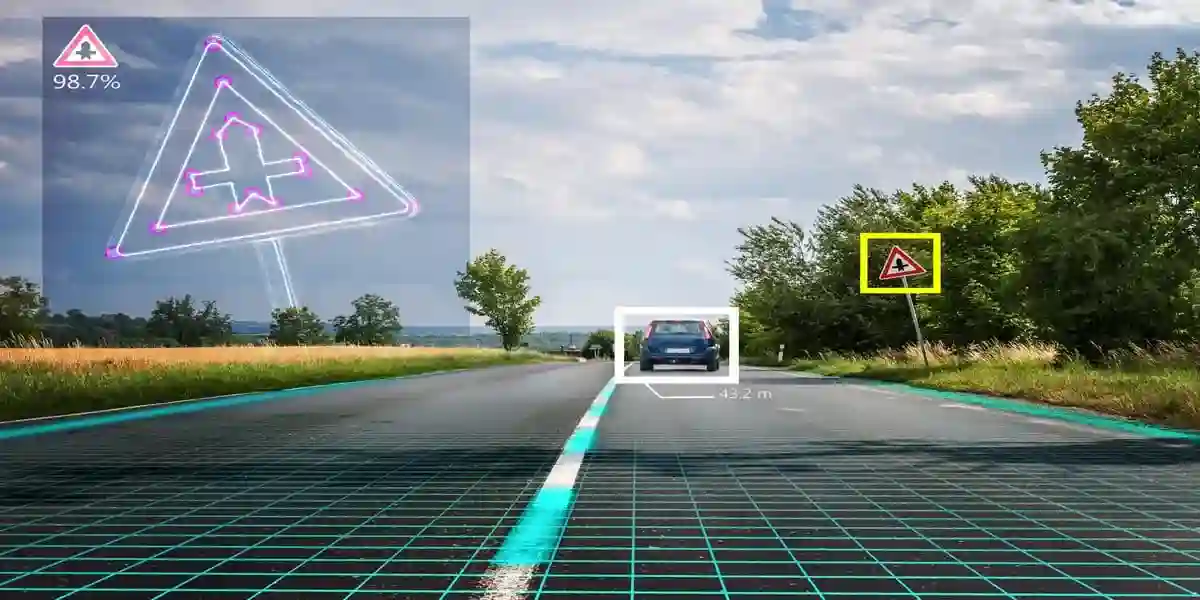
May 12, 2023
Blog Digital World The future of the SLAM technology market
Simultaneous localization and mapping, or SLAM, is a technology used by computer vision systems to gather visual data from the outside world using a wide range of built-in sensors. The technology enables robots and other autonomous cars to create a map and simultaneously localize themselves on that map. After slow beginnings due to complexity, it’s now an area poised to take off.
BCC Research estimated the global SLAM market to be worth $245.1 million in 2021 and expects it to break the one-billion barrier to reach $1.2 billion by 2027. The need for autonomous vehicles is a key driver of the SLAM market. Unmanned aerial vehicles (UAV) are similarly emerging as a popular method for real-time mapping, monitoring and surveillance, which is further driving the need for technologies that can effectively map and localize surrounding areas.
What’s in the pipeline for SLAM technology?
As robotics and AI continues to infiltrate every aspect of society, the future of SLAM technology looks especially promising. For any autonomous robot, SLAM offers an answer to the problem of mapping and localization. For years it was believed that having an object build a map while simultaneously keeping track of its own location amounted to a classic “chicken or the egg” scenario with no clear solution. Standalone mapping and localization solutions exist in isolation, but SLAM has the technological complexity to do both at once.
The growing demand for autonomous robots means more verticals need an answer to the problem of mapping and localization – which is painting a positive picture for SLAM. Tech companies are ramping up investments in the field, with increased emphasis on integrating this technology into their offerings. With organizations like Lenovo, Google is integrating SLAM technology into Project Tango, which employs SLAM maps and cameras to determine depth and comprehend the surrounding environment. In a technological breakthrough, Project Tango has demonstrated context.
While Google has spearheaded the integration of SLAM technology, Project Tango needs a two-camera hardware system to detect depth. This means the likelihood of the tech becoming widely adopted is fairly low. The majority of devices have dual or even triple cameras, but the underpinning technology is still in its infancy. The business has already upped its game with Google Lens because the data is much more valuable now wearables are becoming widespread.
Facebook is building a name for itself in the augmented reality sector, benefiting from its two billion user base. This gives Facebook a significant edge if it uses the community to coordinate the application mapping. Apple, however, gives users access to the technology within its own applications, lending it a strong advantage over Facebook.
Advancements in visual SLAM algorithms
Visual sensors have been the core focus for SLAM solutions due to their low cost, high data collection capacity and broad measurement range. But commercially, visual SLAM is still in its early stages. While it carries a lot of promise, the technology has not yet reached its desired capabilities.
In the future, it will likely play a role in augmented reality apps. Only visual SLAM technology can deliver this level of precision when it comes to mapping the physical environment, which is necessary to accurately project virtual images onto the real world. There are a range of field robots that use visual SLAM systems. Optical SLAM systems are used by rovers and landers to explore Mars. The same technology can be used by drones and field robots in agriculture to autonomously fly through crop areas. Systems for visual SLAM could be used by autonomous cars to map and comprehend their surroundings.
Replacing GPS tracking and navigation with visual SLAM is another emerging market opportunity. GPS systems are only accurate within a few meters, and are useless indoors or in large cities where the sky can’t be seen. VSLAM helps solve these issues because they aren’t reliant on satellite data. The demand for visual SLAM technology is expected to climb, as it makes products such as augmented reality and autonomous vehicles much more marketable.
Disadvantages of SLAM
Environments in the real world are constantly changing – they are filled with moving people and impermanent stationary objects (like chairs and parked cars). This makes it incredibly difficult for a SLAM algorithm to determine whether an object is stationary or not. For SLAM tech to be effective, it cannot add a moving object to the map and assume that it’s stationary. Instead, it must identify it, and either ignore it or track it as a moving landmark. The traditional SLAM solution has a high level of redundancy, which is puttiong the brakes on market growth.
Visualise the market for SLAM
Plot and determine the trajectory of the simultaneous localization and mapping technology market. BCC Research’s brand new report provides five-year market forecasts and deep dives into the key drivers and inhibitors of the market. Providing regional analysis and evaluation of the competitive landscape, the report acts as an invaluable guide to navigating the industry.
Download your complimentary report overview or purchase the report in full here.
Alternatively, consider becoming a member of the BCC Research library. Membership offers access to the full range of reports within our information technology category. Get in touch today to find out more.

Olivia Lowden is a Junior Copywriter at BCC Research, writing content on everything from sustainability to fintech. Before beginning at BCC Research, she received a First-Class Master’s Degree in Creative Writing from the University of East Anglia.

From smartphones to satellites, antennas play a vital role in enabling the seaml...

Introduction Artificial Intelligence (AI) and the Internet of Things (IoT) are r...

We are your trusted research partner, providing actionable insights and custom consulting across life sciences, advanced materials, and technology. Allow BCC Research to nurture your smartest business decisions today, tomorrow, and beyond.
Contact UsBCC Research provides objective, unbiased measurement and assessment of market opportunities with detailed market research reports. Our experienced industry analysts assess growth opportunities, market sizing, technologies, applications, supply chains and companies with the singular goal of helping you make informed business decisions, free of noise and hype.